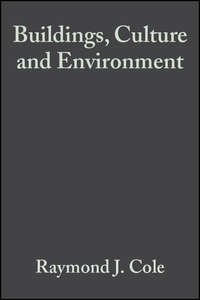Richard Lorch - Buildings, Culture and Environment

With accelerating change towards globalisation, the efficacy of design solutions not embedded within regional culture has been prone to failure – technically, socially and economically. Environmental problems and questions surrounding how to achieve a sustainable built environment are now posing urgent challenges to built environment practitioners and researcher. However, international cooperation in setting targets and standards as well as an increasing exchange of environmental information and practices present designers, clients and occupants with new problems that comprise local needs and the built environment. This book addresses the role regional culture play in the successful (or otherwise) process of exchanging and adapting environmental practices and standards in the built environment. Using the specific case of the design of environmentally sound buildings, the book identifies a number of issues from different perspectives: The conflict between regionally appropriate environmental building practices within a global technical and economic context. How human, social and cultural expectations limit technological advances and performance improvements. To what extent information on environmentally progressive buildings can be transferred across cultures without compromising regional and local practices. Which ideas travel successfully between regions – generic principles, specific ideas or specific solutions? How the idea of regional identity is being redefined as the process of globalisation both widens and accelerates.









